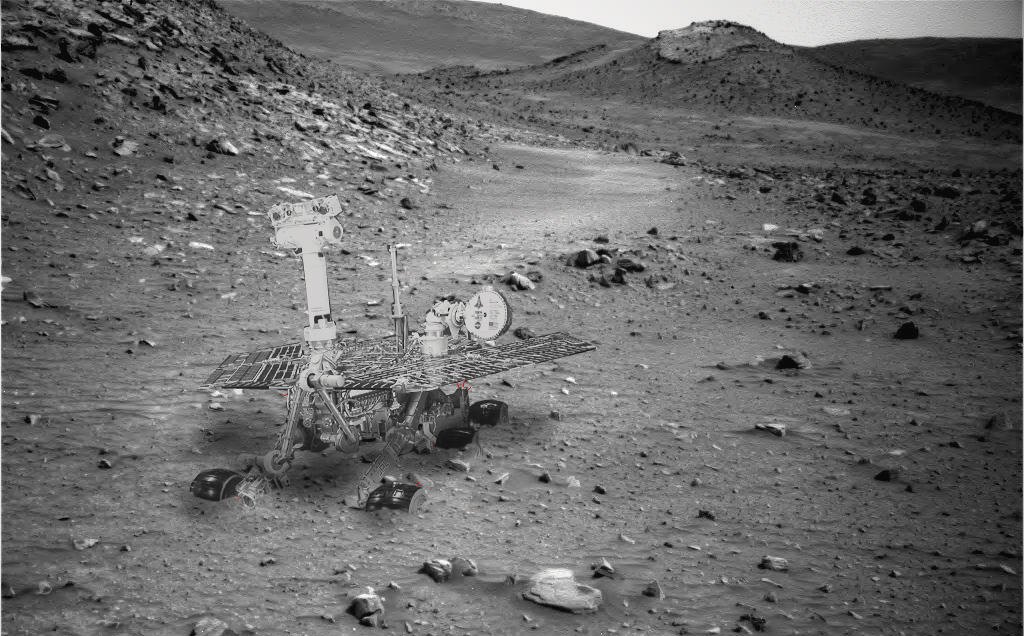[/caption]
Still no response from Spirit, the Mars Exploration Rover that became stuck in a sand trap on the Red Planet, and went into hibernation without sufficient solar power. March 10 was the point at which the rover should have received its maximum amount of sunshine – i.e. power -- for this Martian year, and with the passage of that date, optimism is dimming for being able to revive Spirit. But, the rover teams have not yet given up all hope and have a few unique strategies up their sleeves to try and wake the sleeping rover.
Over the past few months, engineers at JPL said they used strategies to contact Spirit based on the possibility that increasing energy availability might wake the rover from hibernation. Now, the team has switched to communication strategies designed to address more than one problem on the rover.
"The commands we are sending starting this week should work in a multiple-fault scenario where Spirit's main transmitter is no longer working and the mission clock has lost track of time or drifted significantly," said JPL's John Callas, project manager for Spirit and Opportunity.
No one probably wants to hear this, but if no signal is heard from Spirit in the next month or two, the rover will officially be declared as lost, and the rover teams will shift to single-rover operations, continuing to operate Spirit's active twin, Opportunity.
[caption id="attachment_79404" align="aligncenter" width="580" caption="The Spirit rover, as seen by the HiRISE camera on the Mars Reconnaissance Orbiter. Credit: NASA, image enhanced by Stu Atkinson. "]
[/caption]
Spirit has not communicated for almost one Earth year -- since March 22, 2010. Being stuck as the Martian winter approached, the rover could not move into a favorable position for its solar panels to gather enough energy from the Sun to keep the rover completely "alive," and it eventually went into a low-power hibernation mode.
Officials from JPL said that during the Martian winter with most heaters turned off, Spirit experienced colder internal temperatures than in any of its three previous winters on Mars. The cold could have damaged any of several electronic components that, if damaged, would prevent reestablishing communication with Spirit.
But the rover teams have worked for more than 8 months to try and regain contact, just in case the increased solar power available would have awoken Spirit. NASA's Deep Space Network of antennas in California, Spain and Australia has been listening for Spirit daily. The rover team has also sent commands to elicit a response from the rover even if the rover has lost track of time, or if its receiver has degraded in frequency response.
With the available solar energy at Spirit's site estimated to peak on March 10, revised commanding then began March 15, including instructions for the rover to be receptive over UHF relay to hailing from the Mars orbiters for extended periods of time and to use a backup transmitter on the rover.
We'll wait patiently, and hope to hear from Spirit.
She landed on Mars waaaay back on Jan. 4, 2004, for a mission originally designed to last for three months.
Spirit and Opportunity both have made important discoveries about wet environments on ancient Mars that may have been favorable for supporting microbial life. Opportunity landed three weeks after Spirit.
 Universe Today
Universe Today
